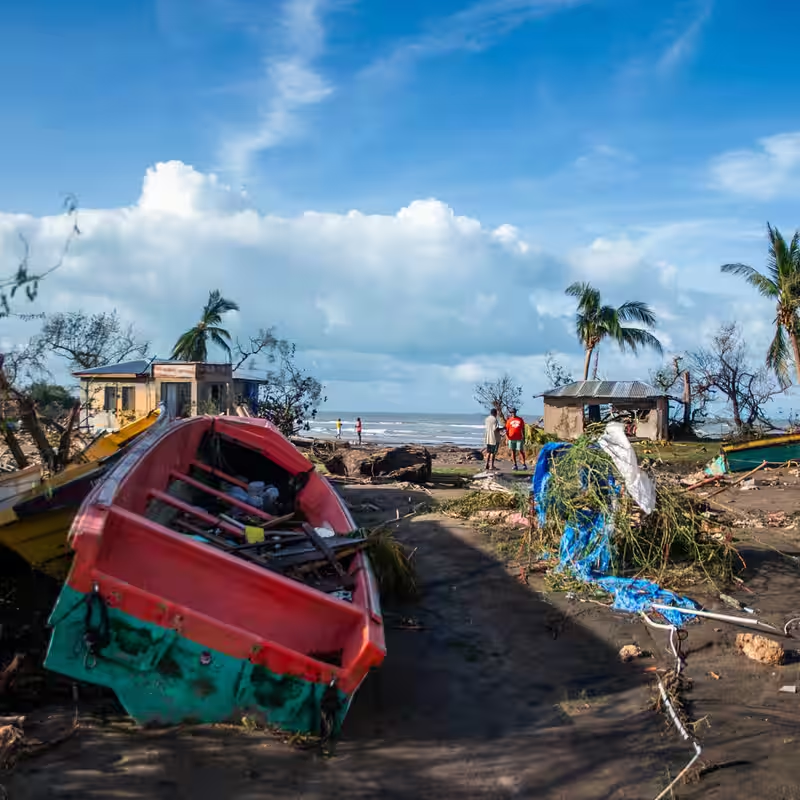Table of Contents
- Hurricane Melissa: A Catastrophic Path
- Jamaica Reels From Category 5 Devastation
- Haiti’s Heartbreak: Children Among the Dead
- Cuba Braces as Melissa Makes Landfall
- Emergency Response and International Aid
- Why Storms Like Melissa Are Getting Worse
- Sources
Hurricane Melissa: A Catastrophic Path
Hurricane Melissa has left a trail of destruction across the Caribbean, claiming lives in Jamaica and Haiti before slamming into eastern Cuba with sustained winds of 120 mph. The storm, which briefly reached Category 5 strength with 185 mph winds over Jamaica, has become one of the deadliest Atlantic hurricanes of 2025.
As of October 30, officials confirm at least 20 deaths in Haiti—including children—and five confirmed fatalities in Jamaica’s St. Elizabeth Parish. Communication blackouts and widespread flooding continue to hamper rescue and damage assessments.
Jamaica Reels From Category 5 Devastation
In southwestern Jamaica, Hurricane Melissa struck with terrifying force. Entire villages in St. Elizabeth Parish lost every roof. “It’s a complete disaster,” said Floyd Green, Jamaica’s agricultural minister. Critical infrastructure—including the parish church, tax office, supermarket, and bakery—was severely damaged or destroyed.
Superintendent Coleridge Minto reported that floodwaters “washed away everything,” leaving survivors stranded without food, clean water, or shelter. Nearly 80% of Jamaica lost power, and telecom networks collapsed, cutting off families in the hardest-hit regions.
About 25,000 Jamaicans are now in emergency shelters. Many may never return home—especially in St. Elizabeth, known as the nation’s “breadbasket,” where farms were flattened, threatening food security island-wide.
Haiti’s Heartbreak: Children Among the Dead
In the coastal town of Petit-Goâve, Haiti, tragedy struck before dawn. Around 4 a.m., the Digue River burst its banks, flooding more than 160 homes. At least 20 people drowned, including several children. Another dozen remain missing.
“The requests for aid are immense,” said Ronald Louis of Haiti’s Municipal Civil Protection Committee. Survivors urgently need drinking water, hygiene kits, temporary shelters, and heavy machinery to reinforce the riverbank before the next rainfall.
Haiti, already grappling with political instability and economic collapse, now faces a humanitarian emergency with limited resources to respond.
Cuba Braces as Melissa Makes Landfall
After ravaging Jamaica and Haiti, Hurricane Melissa weakened slightly to Category 2 but still delivered punishing winds and torrential rain to eastern Cuba. Granma Province reported collapsed homes, uprooted trees, and rivers swallowing entire neighborhoods.
Cuban President Miguel Díaz-Canel announced that over 735,000 people had been evacuated ahead of landfall—a massive logistical feat that likely saved countless lives. Still, towns like Sagua de Tánamo, home to 45,000 residents, were partially submerged, with floodwaters rising to rooftops.
Emergency Response and International Aid
The U.S. State Department has activated Urban Search and Rescue teams and pledged disaster-response support across the Caribbean. Notably, the U.S. Agency for International Development (USAID) is no longer operational after being shuttered earlier in 2025, shifting coordination to the State Department.
In Jamaica, Prime Minister Andrew Holness vowed swift action: “Our teams are on the ground working tirelessly to rescue, restore, and bring relief where it’s needed most.” Remarkably, three babies were born during the storm, a symbol of resilience amid chaos.
Why Storms Like Melissa Are Getting Worse
Scientists warn that climate change is fueling more intense, rapid-forming hurricanes like Melissa. Warmer ocean temperatures and higher atmospheric moisture levels increase both wind speeds and rainfall totals—making historic storms the new normal in the Caribbean.
Experts urge regional governments to invest in early-warning systems, climate-resilient infrastructure, and cross-border emergency protocols to mitigate future disasters.




